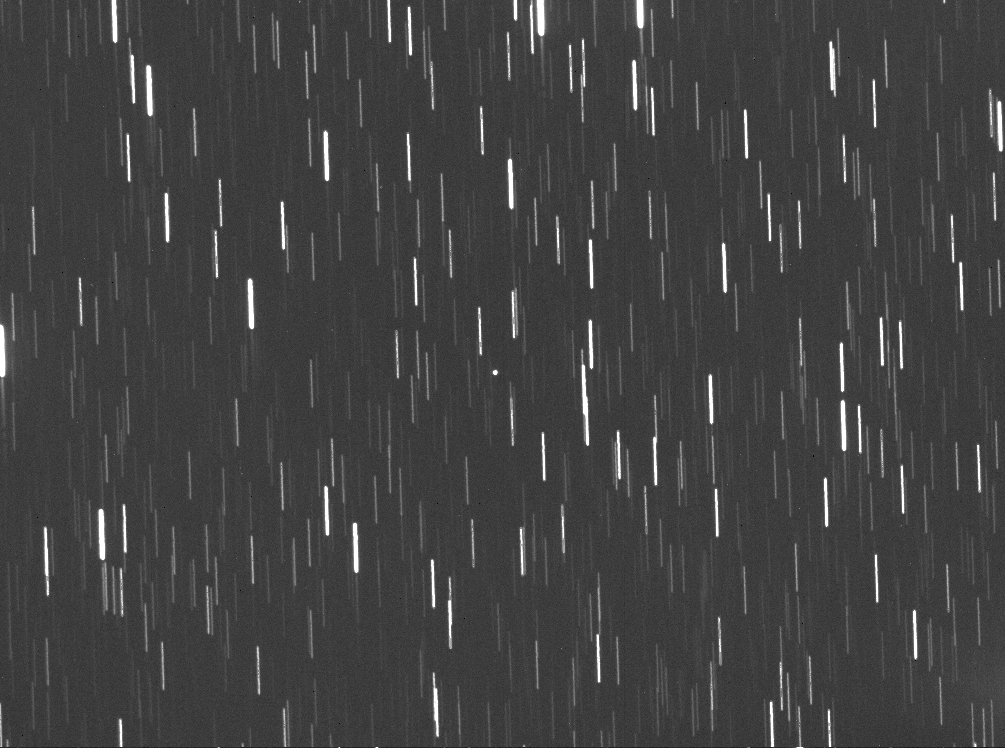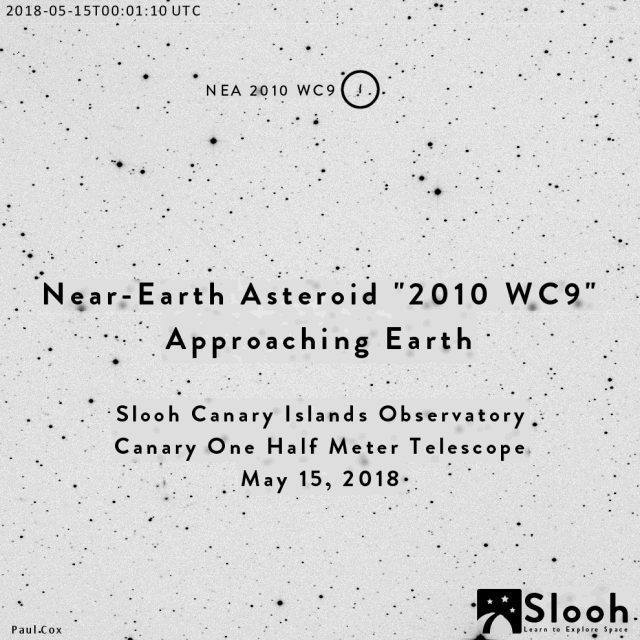'Lost' Asteroid 2010 WC9 Makes an Unusually Close Flyby of Earth

A jumbo-jet-size asteroid gave Earth a close shave today (May 15), whizzing past our planet at a safe distance of 126,000 miles (203,000 kilometers) — or about half the distance between Earth and the moon.
The asteroid, which is officially designated 2010 WC9, made its closest approach at 6:05 p.m. EDT (2205 GMT) while traveling at a speed of 28,655 mph (46,116 km/h), according to the Minor Planet Center.
Astronomers estimate that the asteroid measures 125 to 390 feet (38 to 119 meters) in diameter. That means it's about as big as New York City's Statue of Liberty, though it could be even longer than a football field. [Images: Potentially Dangerous Asteroids]
While this isn't exceptionally large for a near-Earth asteroid, it is rare for asteroids this big to venture so close to Earth. According to EarthSky.org, this was "one of the closest approaches ever observed of an asteroid of this size."
Asteroid 2010 WC9 was first spotted by the Catalina Sky Survey in 2010, but astronomers lost track of it once it became too faint to see. The "lost" asteroid was rediscovered on May 8, and astronomers have been tracking its approach ever since.
The asteroid isn't visible to the naked eye, but it can be spotted through some telescopes. Astronomers with The Virtual Telescope Project in Italy and Tenagra Observatories in Arizona captured a view of the asteroid today at 2:46 a.m. EDT (0646 GMT). At the time, the asteroid was about 454,000 miles (730,000 km) from Earth.
Breaking space news, the latest updates on rocket launches, skywatching events and more!
The Slooh community observatory has also been tracking the asteroid, and yesterday (May 14), the observatory showed a live webcast of the asteroid as seen from its telescopes at the Institute of Astrophysics of the Canary Islands. (You can learn more about how Slooh.com tracks near-Earth asteroids here.)
Email Hanneke Weitering at hweitering@space.com or follow her @hannekescience. Follow us @Spacedotcom, Facebook and Google+. Original article on Space.com.

Hanneke Weitering is a multimedia journalist in the Pacific Northwest reporting on the future of aviation at FutureFlight.aero and Aviation International News and was previously the Editor for Spaceflight and Astronomy news here at Space.com. As an editor with over 10 years of experience in science journalism she has previously written for Scholastic Classroom Magazines, MedPage Today and The Joint Institute for Computational Sciences at Oak Ridge National Laboratory. After studying physics at the University of Tennessee in her hometown of Knoxville, she earned her graduate degree in Science, Health and Environmental Reporting (SHERP) from New York University. Hanneke joined the Space.com team in 2016 as a staff writer and producer, covering topics including spaceflight and astronomy. She currently lives in Seattle, home of the Space Needle, with her cat and two snakes. In her spare time, Hanneke enjoys exploring the Rocky Mountains, basking in nature and looking for dark skies to gaze at the cosmos.


